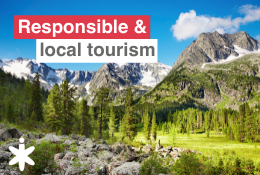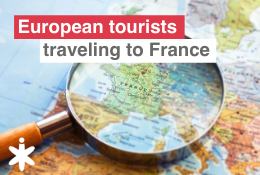The “Netflix Effect” or how the streaming giant is impacting international tourism
The “Netflix Effect” or how the streaming giant is impacting international tourism

Live my life of… Alice, Green Team member
24 March 2019
Gastronomy in the heart of destination marketing
25 June 2019The “Netflix Effect” or how the streaming giant is impacting international tourism
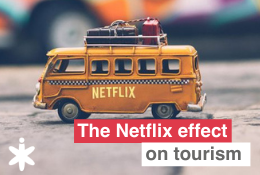
Ready, set … action! Wide shot on a green moorland, forward tracking above a rolling countryside, speeding past hills and forests. Long take on the waves raging against a cliff, jagged rocks showing on the surface. Traditional music in the background swelling gradually, a fortress finally appears perched on a rocky peak, structure of improbable architecture, design of stone, ingenuity and stubbornness … Who has never dreamed of flying to the majestic landscapes of Scotland or to the mystique Iceland after watching a movie or series? Who has never felt his soul racing at the sight of the natural wonders of our planet and suddenly thought of buying a plane ticket to New Zealand or Hawaii? Probably nobody.
Our audiovisual consumption has increased exponentially with the arrival of actors such as Netflix on the market. The international streaming giant is recording an increase of about 10% in its number of subscriber year after year. In February 2019, Netflix has reached 5 million subscribers in France. A stage all the more symbolic because it means the American streaming service has overtaken Canal+. France is also one of the most dynamic markets for Netflix. In its home country, the United States, the service now has more than 60 million subscribers and accounts for 10% of the time spent watching TV. According to a recent study, Americans now consider Netflix an “essential” service. No wonder the new media giant has now a significant impact in many areas, what experts already call the “Netflix effect”. Tourism is one of those areas where the impact of the Netflix effect continues to be felt day after day in many different ways, for the better … and for the worse.
- The classic case study: the explosion of tourism in Scotland
Scotland is no stranger to the tourism boom that can be generated by the cinema or the small screen. For years now, the country has benefited from the tourist windfall created by films like James Bond: Skyfall or the Harry Potter saga. The Glenfinnan viaduct, on which the steam train posing as the Hogwarts Express circulates, attracts up to 2,000 fans of the famous wizard a day and up to 400,000 visitors a year.
True TV success, the series Outlander further contributed to create a real craze for the North of the United Kingdom. The sites featured in the series have witnessed a 67% increase in attendance since its launch on TV in 2013. So much so that the author of the books the series was adapted from, Diana Gabaldon, received a distinction for “services rendered to Scottish Tourism” from VisitScotland, the Scottish Tourist Board.

Most recent examples, the movie Outlaw King released on Netflix in November 2018, starring American superstar Chris Pine, is the one now boosting visitors’ arrivals in Scotland. Based on the life of Robert the Bruce, King of Scots, the film has received the approval of critics and spectators alike, but the Scottish landscapes are the biggest winners of this production. The tour operator AC Group reported figures up 167% for its bookings to Scotland following the release of the film. First among the countries behind these reservations, the United States, Brazil, the United Arab Emirates and … France!
“Going to visit the destinations they’ve seen on Netflix or in movies is becoming an important selling point, as it allows travelers to truly connect with the destination,” explained Malcolm Lindop, CEO of the tour operator.
Following the release of the film, local tour operators immediately jumped on the bandwagon and on the Isle of Skye, for example, three Outlaw King sites quickly appeared on travel agency brochures. Particularly spectacular, the landscapes of the Isle of Skye regularly attract filming crews. The year 2018 marked a record for this region of Scotland with a total of filming reaching 243, versus 198 the previous year.
However, this success is not only beneficial, and people in the small island of Western Scotland are already worried about the lack of infrastructures needed to accommodate such an influx of visitors. Similarly, local institutions cannot help but dread a “Dubrovnik effect” in reference to the real crowds that invaded the Croatian city after its appearance on screen in the Game of Thrones series …
Note that Scotland is not the only part of UK to have benefited from the Netflix effect to boost its arrivals. According to a study conducted by Barclays, the Netflix series The Crown, which focus on the reign of Queen Elizabeth II, has also generated a real resurgence of interest for England with 63% of international tourists surveyed more interested in visiting the country than in previous years. Likewise, the Netflix series Sex Education, watched by more than 40M viewers worldwide since its release, has already seen an exceptional influx of tourists rush to its filming locations in a small unknown valley in Wales.
- Unexpected surprises: when Colombia and Turkey steal the scene
While it is not surprising that Netflix series like La Casa de Papel, which has been internationally successful, has boosted tourism in Spain, things may be less obvious for countries whose reputations have suffered from crises or local events negatively affecting their tourist arrivals.

However, it would seem that Turkey, and especially the city of Istanbul, may indeed join the list of countries which can credit Netflix for their good tourist figures. After two very complicated years for tourism in Turkey in 2016 and 2017, especially after the failed coup of 2016, the country finally seems to come out of the crisis and tourist arrivals in 2018 are on the rise again.
And maybe a small part of this success is due to the first Turkish original Netflix series The Protector. With already more than 20 million views worldwide, the modern fantasy TV series set in Istanbul seems to arouse its viewers’ curiosity. The head of Netflix in Turkey has indeed confirmed that his teams have received many questions from subscribers about the location of certain sites appearing on screen. Similarly, “Protector Tours” have begun flourishing everywhere in the local travel agencies of the city. Some foreign tour operators have also contacted the streaming service to create tours as faithful as possible to the locations depicted in the series.
Using elements from both ancient and modern Turkey, The Protector seems perfectly equipped to contribute to Istanbul’s tourist reputation. This is also what the Netflix’s Turkish teams seem to think of their second upcoming production, a series that will look at some of the country’s most famous legends, and will this time feature on screen famous places such as Göbekli Tepe, the country’s oldest archeological. To be continued.
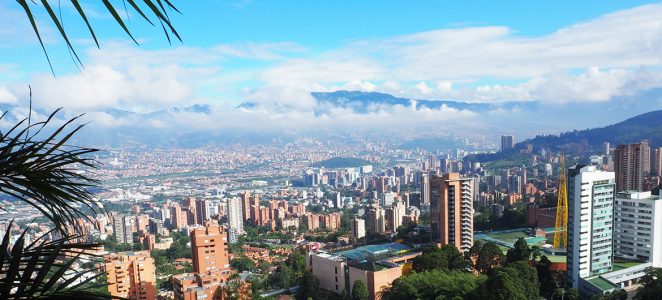
Let’s take a look at Latin America now and at Colombia more precisely. Following the agreement signed in 2016 between the President of the country and the head of the FARCs, the political situation has somewhat calmed down in the country, which has opened up to tourism. And successfully! For one or two years now, Colombia has repeatedly appeared in the top 10 countries to discover. The country welcomed more than 3 million visitors in 2017, the year after the signing of the treaty, an increase of almost 300% since 2006. Top destinations include Bogota, Cartagena and … Medellin.
Former crime capital and stronghold of Pablo Escobar, Medellin has seen a steady increase of nearly 25% of its tourist arrivals in recent years.
A true instrument of this success, the Netflix series Narcos is constantly cited as the number one reason to visit the city by foreign tourists.
Immensely popular, the series was filmed partly on site in Medellin and visitors can now embark on various tours following the footsteps of the famous trafficker.
The tourism boards of Colombia and of Medellin prefer not to dwell on this dark hour of their history but it is clear that it remains an important lever for local tourism as the city hall has just announced the construction of 34 new hotels. Should we talk about happy ending?
- To be on Netflix or not to be: when things go wrong…
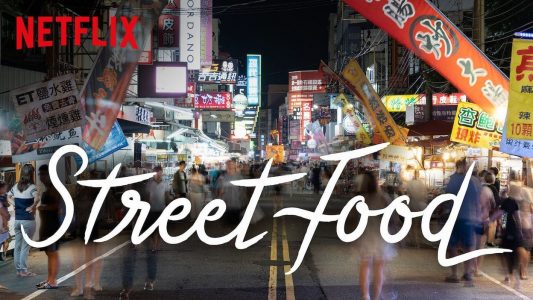
Netflix recently launched a new series called Street Food. Immediately, the series has been a huge success and has contributed to make street food tourism a thing. Street food is not new, of course, it has almost always been part of foodies’ travel itineraries, but food shows have taken some time to catch up with this growing tourism trend, often rather focusing on Michelin starred restaurants and dishes, tempting yes but unattainable to most of us.
But Street Food is changing the game for other reasons too: it has brought to light regions and cities incredibly rich in terms of street food, but previously neglected for the benefit of their more touristy or more consensual neighbors.
Season 1 explores the streets of Chiayi for example. Never heard of it? Not surprising. However, in a few weeks after the broadcast of the first season, bookings to this region of Taiwan have literally exploded, and for good reason: it is home to some of the most incredible night markets in the world.
Same story in Japan: the city of Osaka, often overshadowed by its neighbors Tokyo and Kyoto, found its place in the Netflix series as Japan’s street food capital, true heaven of markets of all sorts.
But if it seems great that dishes costing only 3 euros can in turn generate millions in tourism revenue, the show also generated a lot of tension. Whenever a selection has to be made, there are always those left behind. It was Malaysia this time around. Malaysian “netizens” (Netflix subscribers) have not hesitated to voice their dissatisfaction with the culinary series. Indeed, the first season of Street Food, which focuses on Asia, has skipped over Malaysia, despite the important list of countries featured: Singapore, the Philippines, Indonesia, Vietnam, Thailand, Taiwan, Japan, South Korea and India. Malaysian Netizens have even challenged the Ministry of Tourism, accusing him of not doing its job properly … Another example showing that the impact of Netflix very much exceeds the scope of the small screen.


 All news
All news  Back to the newsroom
Back to the newsroom